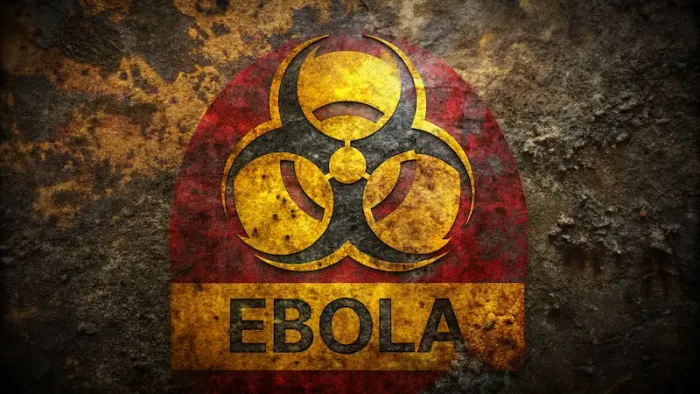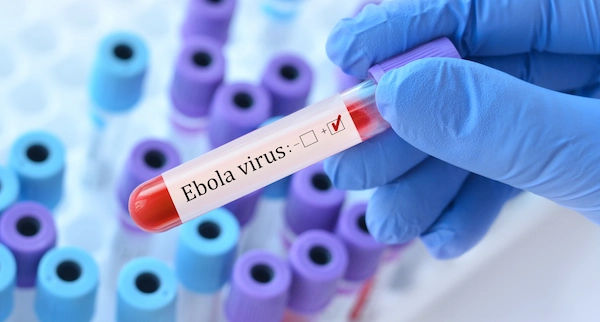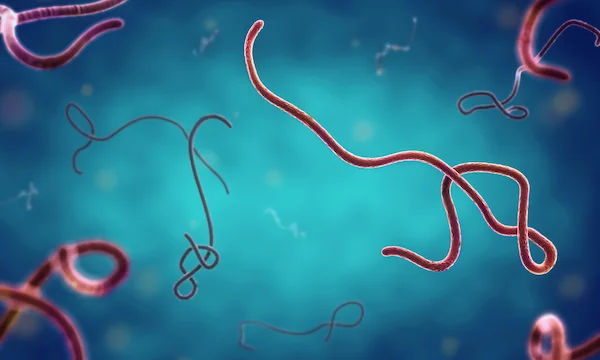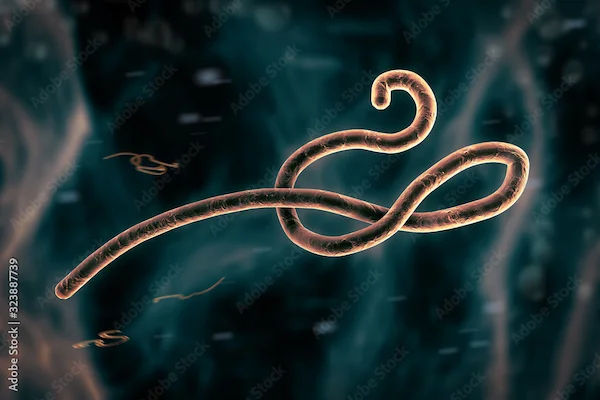Understanding the Ebola Virus: Symptoms, Prevention, and Key Facts
Know about the Ebola virus, what it is, how it spreads, signs, symptoms, diagnosis, treatment options, prevention and precautionary measures.

Written by Dr. J T Hema Pratima
Reviewed by Dr. Shaik Abdul Kalam MD (Physician)
Last updated on 7th Oct, 2025

Introduction
The Ebola virus, often surrounded by an aura of fear and mystery, is a severe and often fatal illness that demands respect and understanding. While major outbreaks are rare and typically confined to specific regions in Africa, the potential for spread makes it a significant global health concern. This guide aims to demystify the Ebola virus, providing you with clear, factual information about how it spreads, its tell-tale symptoms, and the crucial steps for prevention and treatment. Whether you're a frequent traveller, a healthcare enthusiast, or simply seeking to be well-informed, this article will equip you with the essential knowledge to understand and discuss Ebola virus disease confidently. Our goal is to replace anxiety with awareness, emphasising that with proper precautions, the risks can be effectively managed.
What Exactly is the Ebola Virus?
The Ebola virus is a member of the Filoviridae family, a group of viruses known for causing severe viral hemorrhagic fevers in humans and other primates. It's a zoonotic disease, meaning it originated in animals before spilling over to humans. Scientists believe that fruit bats are the most likely natural reservoir for the virus. The virus itself is filamentous, often described as having a "shepherd's crook" appearance under a microscope. Upon infection, it attacks the body's immune system and vascular system, leading to intense bleeding and organ failure characteristic of the disease. Understanding its nature is the first step in combating it.
Consult a Top General Practitioner for Personalised Advice
A Brief History of Ebola Outbreaks
The virus was first identified in 1976 near the Ebola River in what is now the Democratic Republic of Congo. Since then, sporadic outbreaks have occurred, primarily in remote villages in Central Africa. The most devastating outbreak in history occurred in West Africa between 2014 and 2016, resulting in over 11,000 deaths and highlighting the virus's potential for international spread. More recent, smaller outbreaks in the Democratic Republic of Congo and Uganda have demonstrated both the persistent threat and the improved global capacity for rapid response, including the deployment of effective vaccines. This history underscores the importance of robust public health systems.
How Does the Ebola Virus Spread?
Understanding the transmission facts of Ebola is critical to preventing its spread and alleviating unnecessary fear. The virus is not airborne, meaning you cannot catch it simply by being in the same room as an infected person. It spreads through direct contact with bodily fluids of a person who is symptomatic or has died from the disease.
Primary Modes of Transmission
The virus can be transmitted through:
1. Blood: Contact with the blood of an infected person.
2. Vomit/Diarrhoea: These fluids are highly infectious in the later stages of the disease.
3. Sweat and Saliva: Direct contact with these fluids poses a risk.
4. Semen: Men who have recovered from Ebola can still transmit the virus through semen for several months after recovery.
Contaminated Objects: Needles, syringes, or surfaces soiled with infectious fluids can harbour the virus.
It's important to note that the Ebola virus incubation period—the time from infection to the appearance of symptoms—is typically 2 to 21 days. A person is not contagious during this incubation period; they become contagious only once they start showing symptoms.
Common Misconceptions about Ebola Transmission
Dispelling myths is crucial for public health. You cannot get Ebola from:
1. Casual contact: Shaking hands or hugging a person who is not showing symptoms.
2. Airborne transmission: Breathing the same air as an infected person.
3. Water or food: Unless the food is bushmeat from an infected animal.
4. Mosquitoes: There is no evidence that mosquitoes transmit the Ebola virus.
Recognising the Signs and Symptoms
The early signs of the Ebola virus can be misleadingly similar to other common illnesses like malaria or the flu. This makes awareness and a travel history crucial for early suspicion.
Early Stage Symptoms
Symptoms typically appear abruptly 8-10 days after exposure and may include:
1. Sudden onset of fever and fatigue
2. Severe muscle and joint pain
3. Headache and sore throat
These initial symptoms are a major reason why seeking a professional opinion is vital. If you develop these symptoms and have recently travelled to an area with a known Ebola outbreak, it is critical to consult a doctor immediately. You can connect with a specialist online via Apollo24|7 for an initial assessment before visiting a healthcare facility, ensuring you take the right precautions to protect others.
Advanced Stage Symptoms and Complications
As the disease progresses, more severe symptoms develop, which is why it's classified as a hemorrhagic fever. These may include:
1. Rash, red eyes, and hiccups
2. Impaired kidney and liver function
3. Vomiting, diarrhoea (which can be severe and bloody)
4. Internal and external bleeding (e.g., from gums or in stool)
This stage is critical, and patients require intensive supportive care in a hospital setting to survive.
How is Ebola Diagnosed?
Diagnosing Ebola based on symptoms alone is difficult. Because the early signs of the Ebola virus mimic other diseases, laboratory testing is essential. If Ebola is suspected based on travel history and symptoms, healthcare providers will use tests that detect the virus's genetic material or antibodies in the blood. These tests are conducted in high-security laboratories to ensure safety. Rapid and accurate diagnosis is key to isolating cases and preventing further spread through effective contact tracing.
Current Treatment Options for Ebola Virus Disease
For years, treatment for Ebola was solely supportive. While there is still no universally approved "cure," significant advancements have been made.
Supportive Care is Critical
Supportive care remains the cornerstone of treatment and significantly improves survival rates. This involves:
1. Providing fluids and electrolytes intravenously.
2. Maintaining oxygen status and blood pressure.
3. Treating any other opportunistic infections.
This type of care helps the body fight the virus while preventing fatal complications like dehydration and organ failure.
Advancements in Medical Therapies
The question "Is there a cure for Ebola?" now has a more hopeful answer. Two monoclonal antibody treatments, Inmazeb and Ebanga, have been approved by the FDA. These drugs work by blocking the virus from entering human cells. When administered early in the course of the disease, they have been shown to dramatically reduce mortality. These treatments represent a monumental leap forward in the fight against this deadly virus.
Prevention: Your Best Defense Against Ebola
Prevention is undoubtedly the most effective strategy against the Ebola virus. This involves a combination of vaccination and practical safety measures.
The Role of the Ebola Vaccine
The Ebola vaccine effectiveness has been a game-changer in outbreak control. The rVSV-ZEBOV vaccine (Ervebo®) has been proven to be highly effective in protecting individuals from the Zaire species of Ebola. It is used in a "ring vaccination" strategy, where contacts of confirmed cases, and their contacts, are vaccinated to create a protective buffer. For those travelling to or working in outbreak zones, vaccination is a critical preventive tool.
Practical Safety Measures for High-Risk Areas
If you are in or near an outbreak area, key measures include:
1. Practising careful hygiene, especially handwashing.
2. Avoiding contact with the blood and bodily fluids of infected people.
3. Avoid contact with bats and non-human primates or their raw meat.
4. Avoid facilities where Ebola patients are being treated unless you are a trained healthcare worker.
5. Following safe burial practices for those who have died from Ebola.
Conclusion
The Ebola virus represents a formidable challenge, but it is one that the global health community is increasingly equipped to handle. From the dark days of the 2014 outbreak, we have emerged with powerful new tools: effective vaccines, life-saving treatments, and a deeper understanding of how to contain the virus. The key for the general public is to stay informed through reputable sources like the WHO and CDC, understand the real risks without succumbing to panic, and know the critical importance of early detection and professional care. While the threat of Ebola is real, it is also manageable through knowledge, preparedness, and robust public health measures. By understanding the facts, you empower yourself and your community to stay safe.
Consult a Top General Practitioner for Personalised Advice
Consult a Top General Practitioner for Personalised Advice

Dr. Mohammed Kamran
General Practitioner
5 Years • MBBS, FIDM
Nashik
Apollo 24|7 Clinic - Maharashtra, Nashik

Dr Suseela
General Physician
5 Years • MBBS
Bengaluru
Apollo Medical Center, Marathahalli, Bengaluru

Dr. Gunashree V L
General Physician/ Internal Medicine Specialist
3 Years • MBBS
Bengaluru
Apollo Clinic, JP nagar, Bengaluru

Dr. Sudhashree R
General Physician/ Internal Medicine Specialist
13 Years • MBBS, MRCEM
Bengaluru
Apollo Clinic, JP nagar, Bengaluru

Dr Darshana R
General Physician/ Internal Medicine Specialist
15 Years • MBBS, MD, DNB (Internal Medicine), Diploma in Allergy, Asthma and Immunology , Fellowship in Diabetes
Bengaluru
Apollo Clinic, JP nagar, Bengaluru
Consult a Top General Practitioner for Personalised Advice

Dr. Mohammed Kamran
General Practitioner
5 Years • MBBS, FIDM
Nashik
Apollo 24|7 Clinic - Maharashtra, Nashik

Dr Suseela
General Physician
5 Years • MBBS
Bengaluru
Apollo Medical Center, Marathahalli, Bengaluru

Dr. Gunashree V L
General Physician/ Internal Medicine Specialist
3 Years • MBBS
Bengaluru
Apollo Clinic, JP nagar, Bengaluru

Dr. Sudhashree R
General Physician/ Internal Medicine Specialist
13 Years • MBBS, MRCEM
Bengaluru
Apollo Clinic, JP nagar, Bengaluru

Dr Darshana R
General Physician/ Internal Medicine Specialist
15 Years • MBBS, MD, DNB (Internal Medicine), Diploma in Allergy, Asthma and Immunology , Fellowship in Diabetes
Bengaluru
Apollo Clinic, JP nagar, Bengaluru
More articles from Ebola virus and Marburg virus
Frequently Asked Questions
1. Can the Ebola virus be transmitted through the air?
No, this is a common misconception. Ebola is not an airborne virus like influenza or COVID-19. It requires direct contact with the bodily fluids of an infected, symptomatic person.
2. What is the survival rate for someone infected with Ebola?
The average survival rate has historically been around 50%, but it can vary between 25% to 90% in different outbreaks. With early supportive care and new treatments, survival rates have significantly improved.
3. How long does the Ebola virus survive on surfaces?
The virus can survive for several hours on dry surfaces and for several days in body fluids at room temperature. It can be killed easily with hospital-grade disinfectants like bleach.
4. Is it safe to travel to countries that have had Ebola outbreaks?
The risk to travellers is very low. Ebola spreads through direct contact, and outbreaks are typically localised. It is always wise to check travel advisories from health authorities like the WHO before travelling to any region.
5. What should I do if I think I've been exposed to the Ebola virus?
Monitor your health for 21 days. If you develop any early signs of the Ebola virus, like fever, headache, or muscle pain, seek medical care immediately. Inform the healthcare provider about your potential exposure before your visit so they can take appropriate safety precautions.


